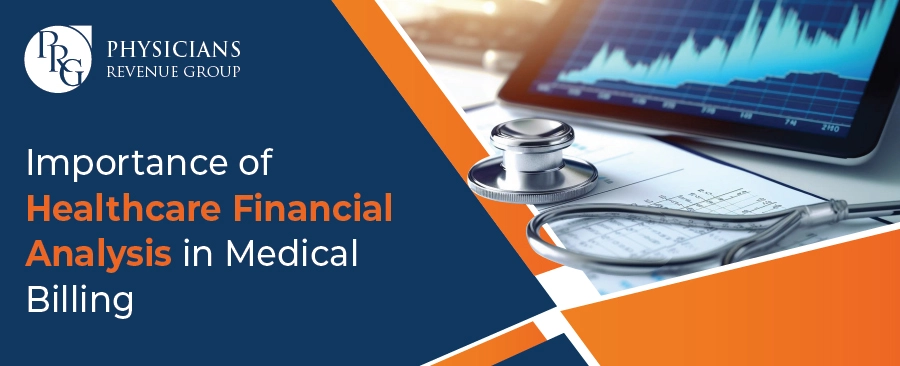
Email: info@prgmd.com | Call: +1 (630) 242-6474
Business hours: 9:00 to 5:00 | Monday to Friday
Email: info@prgmd.com | Call: +1 (630) 242-6474
Business hours: 9:00 to 5:00 | Monday to Friday

Table of Contents
ToggleWhat is the importance of financial analysis for revenue cycle management?
Achieving top of financial performance is essential for a medical practice’s success. From boosting operational efficiency to enhancing patient outcomes – healthcare financial analysis helps practitioners make informed decisions. Decisions that directly impact a practice’s financial bottom line and patient care.
Let’s look into the types financial analysis – understanding how these can:
Financial managers use various types of financial analyses. These offer valuable insights into healthcare financial management. Which help medical professionals and administrative staff in making informed decisions.
Let’s delve into some key types of financial analyses:
The ratio analysis approach uses data extracted from financial statements to provide valuable insights into the following:
These insights come from specific ratios, such as the operating margin, which sheds light on profitability.
Furthermore, the debt-to-capitalization ratio is also relevant for healthcare organizations dealing with substantial capital expenses and long-term debt. Additionally, the cash flow coverage ratio is also essential for healthcare organizations which are facing payment delays.
Financial ratios serve as vital metrics, offering a clear view of the financial health of a healthcare organization.
Trend analysis method involves analyzing a healthcare organization’s financial reports over a specified period to identify patterns. Financial managers can forecast future performance by dividing these trends into key metrics.
For instance, a hospital might analyze trends in various financial indicators over a period of five years. This comprehensive review enables the identification of patterns that can guide future decision-making. Healthcare professionals can address challenges and capitalize on opportunities by understanding the financial performance trail.
In simpler terms, performing comparative analysis means examining data from various financial reports. It provides a wider context for financial information. The process involves:
For instance, financial managers can analyze how the organization’s financial performance has evolved. They can also assess how their results match against industry benchmarks. A comparative analysis process helps identify trends, potential areas for improvement, and areas where the organization excels.
Financial analysis pinpoints weaknesses in a healthcare organization’s revenue cycle. Healthcare providers can identify payment delays, billing problems, denied claims, and other operational inefficiencies by examining data, including not performing patient eligibility verification. Taking prompt corrective action ensures that these challenges do not negatively impact cash flow.
Moreover, effective analysis ensures instant resolution of financial discrepancies, minimizing adverse effects on the organization’s bottom line.
Healthcare financial analysis does more than identify and resolve issues in revenue cycles; it enhances operational efficiency for healthcare providers. This involves optimizing processes for maximum efficiency and cost savings. By examining financial and operational metrics, healthcare organizations can:
This, in turn, allows staff to allocate more time to higher-level tasks, ultimately leading to improved patient outcomes by focusing on providing quality patient care.
Healthcare financial analysis improves overall organizational performance, fostering growth and sustainability. By identifying areas of weakness and inefficiency, healthcare organizations can take corrective actions. This, in turn, enhances efficiency and increases profitability. The benefits of effective analysis are evident, including:
Share:
Categories
Recently Added

What is an ABN in medical billing?

What does a Clearinghouse do During Claims Submission?

What is EOR in Medical Billing?
We Would Love to Assist You!
We treat your data confidentially and don’t share any information with a third party.